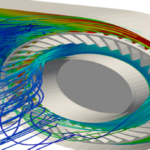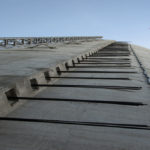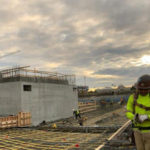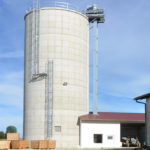Blog
Silo Static Project

Silos are large vertical structures used in industrial and agricultural sectors to store materials in a safe and organized manner. Silos, which should be designed according to the requirements of the project, are planned by considering the type and amount of material to be stored, physical and chemical properties of the material, material flow, operational requirements and logistics needs.
Material selection, cross-sectional shape and dimensions of silos directly affect structural durability. For example, concrete and steel silos offer different advantages in different projects and both materials are ideal for long-lasting projects. By using advanced construction techniques in design, the construction process can be accelerated, and the strength of the structure can be increased.
Silos can be in various shapes such as square, rectangular, cylindrical, hexagonal and octagonal. Each geometric shape has its own advantages and disadvantages. These are decisions that can be evaluated according to the results of the analyses in the design.
In the next stages, factors such as storage capacity, discharge systems and material flow rates should be considered. Therefore, conical bottoms and internal structures in the silo optimize the material flow and balance the load distribution. In silo design, static, dynamic and earthquake loads must be calculated. In addition, lateral forces, moment effects and capacity ratios have a significant effect on the structural strength of the silo.
Material flow is also a critical element in silo design. Flow patterns such as mass flow and funnel flow regulate the movement of the material in the silo. Therefore, it is important to select the most appropriate flow pattern in silo design according to the requirements of the project.
Advanced techniques used in silo construction include slipform and jumpform methods:
- Slipform Method: It creates a continuous structure with continuous pouring of concrete and is ideal for large-scale projects. This method requires 24/7 uninterrupted work and accelerates construction processes. Thanks to the slipform method, a monolithic structure is obtained, and the strength of the structure is increased.
- Jumpform Method: It is based on the process of pouring concrete layer by layer and a certain time is allocated for each layer to dry. This method increases the integrity of the structure and ensures quality control. The jumpform method allows for detailed inspection and is particularly used in projects requiring high strength.
Silo design and construction is a process that requires expertise in engineering and structural design. Proper material selection, appropriate construction techniques and detailed structural analyses are the cornerstones of a successful silo project. Silos designed in compliance with occupational safety and environmental regulations provide long-lasting and reliable storage solutions. By considering these technical details and engineering approaches, reliable silos can be built for industrial and agricultural storage needs.
In addition, international and local standards should be taken into consideration in silo design. Standards such as ACI 313-16, ASCE 7 and Eurocode 1 are an important part of the design process to ensure the structural strength and safety of silos in structural statics and analyses.
These elements, which must be considered in silo design, are the basis for creating a successful and reliable storage solution. These technical details and advanced engineering approaches should be considered to build reliable silos for industrial and agricultural storage needs. In this way, silo storage processes can be made more efficient and safe, and long-lasting structures can be created.
Latest Blog
-
Why Are Reinforced Concrete Static Projects Important?
27 March 2025 -
Why Are Steel Static Projects Important?
21 March 2025 -
What is Acoustic CFD Analysis?
4 March 2025 -
Fire Analysis with CFD: Fire Safety and Simulation Technologies
25 February 2025 -
What Is A Static Project And Why Is It Important?
19 February 2025 -
Silo Static Project
29 July 2024 -
Methods Used In Earthquake Performance Analysis
4 July 2024 -
Reinforced Concrete Calculation Static Report
31 January 2024 -
Steel Calculation Static Report
31 January 2024 -
What Is CFD Analysis?
22 December 2023 -
What Are The Benefits Of CFD Analysis?
22 December 2023 -
Silo Reinforcement with Post-Tensioning Method
26 September 2023 -
Post Tensioning Method in Cantilever Slabs
4 September 2023 -
Post-Tensioning Application In Reinforced Concrete Silos
22 August 2023
















